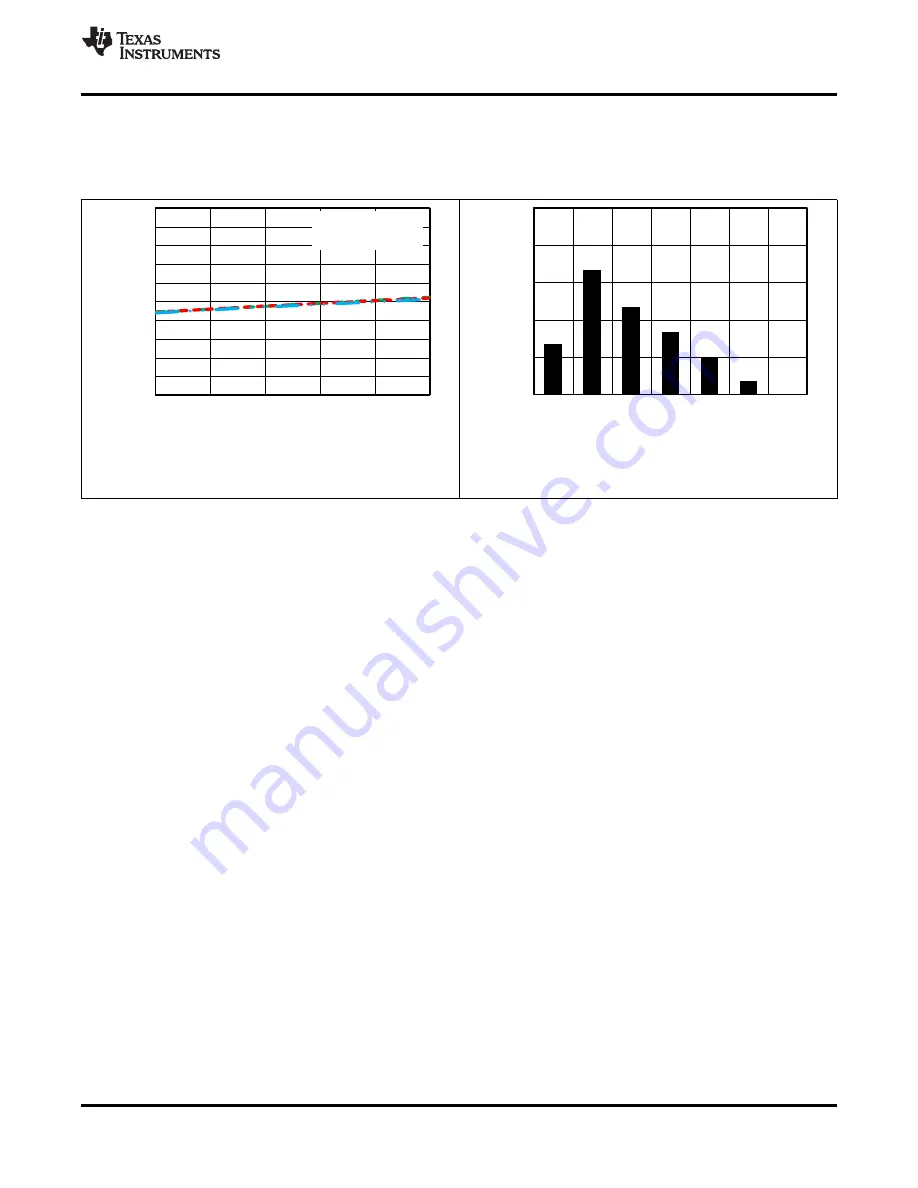
4.095
4.0952
4.0954
4.0956
4.0958
4.096
4.0962
4.0964
4.0966
4.0968
4.097
±
40
±
7
26
59
92
125
RE
F
CA
P
V
o
lta
g
e
(
V
)
Free-Air Temperature (
o
C)
C055
-----
AVDD = 5.25 V
------ AVDD = 5 V
------ AVDD = 4.75 V
0
3
6
9
12
15
0
0.2
0.4
0.6
0.8
1
1.2
Num
b
e
r
o
f
Device
s
REFCAP Drift (ppm/ºC)
C056
SBAS492 – JULY 2015
The performance of the internal buffer output is very stable across the entire operating temperature range of
–40°C to 125°C.
shows the variation in the REFCAP output across temperature for different values of
the AVDD supply voltage. The typical specified value of the reference buffer drift over temperature is 1 ppm/°C
(
) and the maximum specified temperature drift is equal to 1.5 ppm/°C.
AVDD = 5 V, number of devices = 30,
Δ
T = –40°C to 125°C
Figure 79. Variation of the Reference Buffer Output
Figure 80. Reference Buffer Temperature Drift Histogram
(REFCAP) vs Supply and Temperature
8.3.9 Auxiliary Channel
The devices include a single-ended auxiliary input channel (AUX_IN and AUX_GND). The AUX channel provides
direct interface to an internal, high-precision, 12-bit ADC through the multiplexer because this channel does not
include the front-end analog signal conditioning that the other analog input channels have. The AUX channel
supports a single unipolar input range of 0 V to V
REF
because there is no front-end PGA. The input signal on the
AUX_IN pin can vary from 0 V to V
REF
, whereas the AUX_GND pin must be tied to GND.
When a conversion is initiated, the voltage between these pins is sampled directly on an internal sampling
capacitor (75 pF, typical). The input current required to charge the sampling capacitor is determined by several
factors, including the sampling rate, input frequency, and source impedance. For slow applications that use a
low-impedance source, the inputs of the AUX channel can be directly driven. When the throughput, input
frequency, or the source impedance increases, a driving amplifier must be used at the input to achieve good ac
performance from the AUX channel. Some key requirements of the driving amplifier are discussed in the
section.
Copyright © 2015, Texas Instruments Incorporated
31
Product Folder Links:
















































